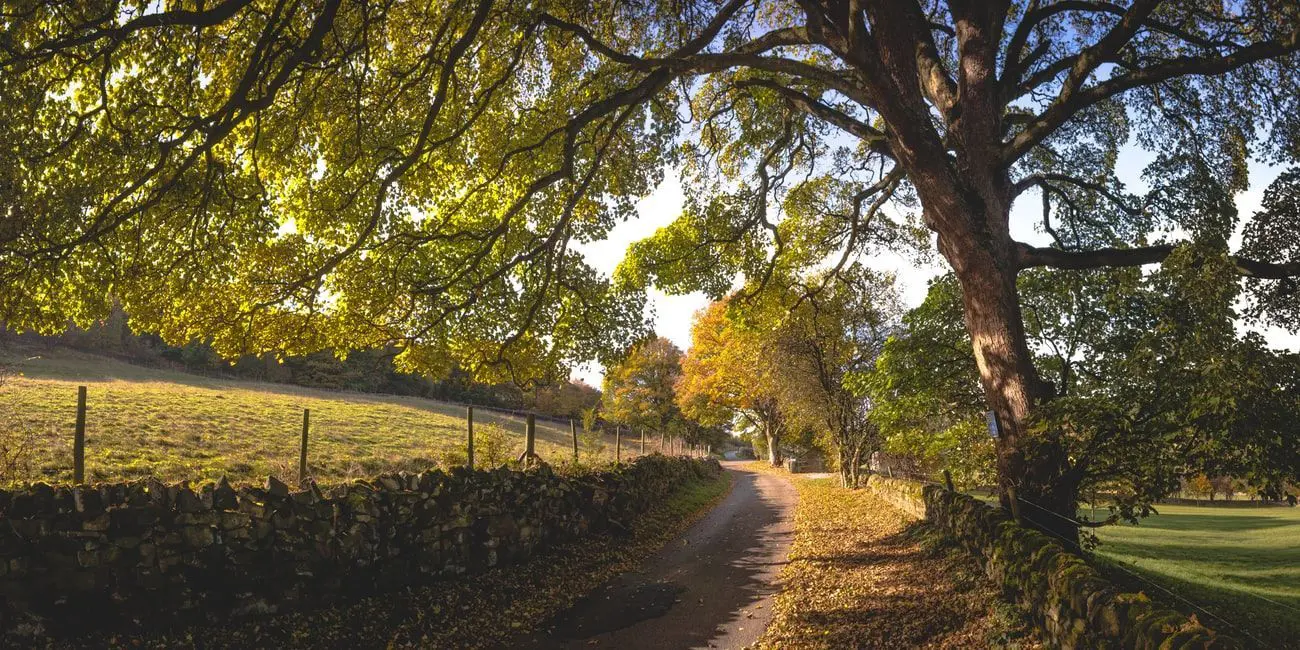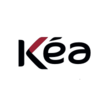Summary of our market study
As of 2020, the global truffle market reflected a trend towards growth despite challenges posed by the COVID-19 pandemic. While the United States is not a significant producer of truffles, with domestic production and exports being negligible, it remained a primary importer. The U.S. truffle market saw a slight increase in imports around $120 million annually, with a notable increase in 2020, while exports experienced a sharp decline, indicating a strong consumer demand for these luxury goods. Major import partners included truffle-producing countries like the Netherlands, France, Italy, Spain, and Poland. Consumption trends indicated a high demand for truffles during seasonal periods, particularly around Christmas and New Year. The truffle industry was characterized by niche markets with high prices, varying significantly by type and quality, with European truffles generally commanding higher prices due to perceived quality, despite potential freshness losses during shipping. There was also an uptick in the presence of truffle products online, demonstrating a shift in purchasing habits. While the pandemic's full impact on global supply chains was not detailed, it suggested a notable effect on the availability and consumption of truffles in traditional settings, such as restaurants. Overall, the market was expected to continue its growth trajectory, although the precise impacts of COVID-19 required further observation.
Dynamics and Trends in the U.S. Truffle Market In the United States
The truffle market remains a burgeoning yet lucrative segment within the broader gourmet food industry. As a historically niche offering, truffles are gradually making their way into American culinary experiences, riding the wave of increased gourmet consumption and a growing appreciation for fine dining. With a market worth between $20 and $25 million, truffles encapsulate a unique intersection of luxury, rarity, and gastronomic delight. One of the key trends in the U.S. truffle market is the increasing demand from high-end restaurants and resorts that pride themselves on using locally sourced, high-quality ingredients. These establishments often opt for truffles as they add a touch of luxury and complexity to their culinary creations. Specialty grocers also contribute to the rising demand, catering to the sophisticated palates of gourmet customers who seek out truffle-infused products like oils, honeys, and cheeses. Farmers' markets are another avenue where the sales of truffles are noteworthy, appealing to consumers who prioritize health and sustainability. Here, the inclination towards organic and locally produced goods resonates with the market positioning of truffles.
Furthermore, e-commerce platforms are playing a pivotal role in meeting the escalating truffle demand by offering a vast selection of truffle-based products to a broader audience. The spending habits of U.S. households underline the potential for market growth, with an average annual food expenditure reaching between $5,000 and $7,000. Growing median household incomes, which reside in the tens of thousands of dollars, coupled with a relatively stable share of food expenditures, underpin the potential for luxury food items like truffles to gain a firmer footing in the American market. An interesting aspect of truffle consumption is its seasonal nature, with significant spikes in interest and demand during festive periods like Christmas and New Year. This indicates a cyclical pattern that producers and retailers could leverage for strategic marketing and stockpiling. Changes in lifestyle and purchasing habits are also influencing the truffle market. The U.S. is witnessing a surge in the organic share of total food sales, indicative of a shift towards more conscientious eating habits. Meanwhile, food spending away from home is steadily climbing, reaching sales in the billions of dollars. This trend signals a robust market for truffle suppliers, with restaurants accounting for a major share of truffle consumption. Lastly, the promising inclination towards online grocery shopping is worth noting, as it paves the way for innovative sales channels for truffles and truffle-based products.
Key Players Shaping the Truffle Market Landscape As the truffle industry garners attention on a global stage, the market sees an intriguing mix of businesses that play various roles, from production to distribution. Let’s explore the main players making waves in the diverse world of truffles, as mentioned in the prior comprehensive market overview.
- Urbani Tartufi: Dominating the Truffle Trade Boasting control over 70% of the global legal truffle market, Urbani Tartufi stands as the titan of truffles. This Italian company, with its stronghold in the truffle scene, commands significant influence in the availability and distribution of these culinary treasures. While Urbani Tartufi has faced issues in the past with product labeling controversies, their dominance signifies the considerable demand and consumer trust in well-established truffle brands.
- New World Truffieres: Pioneering Truffle Cultivation in the U.S. With a vision to integrate truffle cultivation into the agricultural framework of the United States, New World Truffieres has been providing American farmers with the necessary expertise and tree saplings inoculated with truffle spores. Their efforts are central to developing orchards capable of producing local varieties of truffles, potentially transforming the U.S. into a noteworthy player in the truffle cultivation field.
- Pat Long: A Forager's Touch Professional harvesters like Pat Long bring the age-old tradition of truffle foraging to the modern marketplace. Utilizing trained dogs, these foragers have honed the artisanal craft of locating and collecting truffles from the wild, providing a sustainable and eco-friendly harvesting method that's critical for maintaining the delicate balance within truffle ecosystems.
- Tartufi & Delizie and Truffle Hunter: European Exports in High Demand From Italy and the UK, companies such as Tartufi & Delizie and Truffle Hunter represent the traditional heartland of truffle production. Their role in exporting high-quality, authentic European truffles caters to the insatiable demand for diverse truffle varieties in the U.S., ensuring that enthusiasts have access to a range of flavors from the classic terrains of the Old World.
- Kroger: A Retail Giant's Role in Truffle Distribution Supermarket chains like Kroger serve as a significant link between the truffle industry and everyday consumers. By offering truffle products on their shelves, they cater to the growing appetite for gourmet ingredients among a broader audience, making truffles more accessible to the public.
to understand this market
Detailed content of our market study
 Inforamtion
Inforamtion
- Number of pages : 35 pages
- Format : Digital and PDF versions
- Last update :
 Summary and extracts
Summary and extracts
1 Market summary
1.1 Definition and presentation
“Truffle” is the vernacular name of mushrooms that can be found in the ground and are round-shaped. The color of a truffle can differ greatly from one species to another, the main ones sold in the United States are:
- Tuber melanosporum, also called “the black truffle”
- Tuber aestivum, whose nickname is the “black summer truffle”
- Tuber magnatum, the “white truffle” or the “trifola d'Alba Madonna”
- Leucangium carthusianum, the “Oregon black truffle
Truffles are harvested during summer or winter, depending on the species and harvests which often rely on the help of animals such as dogs or pigs, because of their acute sense of smell.
Truffles are often called black or white gold because of their high prices on the markets. They are mainly used in gourmet restaurants for the preparation of elaborate meals and are highly sought after because of their fine and complex taste and rarity.
Once characterized as an “European ingredient”, truffle production is slowly shifting from the Old World to the New World thanks to a better understanding of their cultivation, better awareness and a renewed interest in North America.
1.2 The global market
The FAO’s data can be used to get an overview of the global mushroom and truffle production, to have an idea of what countries are important in terms of production. In ****, according to the FAO, over * million tons of mushrooms and truffles were produced in the world, which China dominating the production by far. China is indeed reponsible for most of the production of mushrooms and truffles, as the graph below shows.
Main producers of mushrooms and truffles World, ****, in tons FAOSTAT
As for truffle production, it has been historically dominated by France, Italy and Spain. But during the past few years, the professional truffle harvesting has considerably been structured around the anglo-saxon world: the US, New Zealand and Australia see farms dedicated to truffles growingly developing, with the latter claiming to having outperformed the French production in **** with a ** to ** tons production compared to ** tons, plus target of ** tons by ****, according to the Australian Truffle Growers Association, while the Oregon’s New World Truffieres estimated *** truffle orchards were in development in **** in the US.
Even though numbers are completely different for truffles only imports and exports (***), the main importers of mushrooms and truffles, in ****, according to the FAO’s ...
1.3 A niche market
A **** market analysis provided by the USDA (***) asserted that the truffle market in the U.S. is still in its infancy. In the country, “revenues from harvesting [***] grossing about $***,*** per year” with less than *,*** pounds harvested in ****. A few years later, in ****, the U.S. imports of truffles accounted for $** million according to an article by Italian Food Excellence. In comparison, imports of mushrooms and truffles in **** accounted for $*** million according to figures published by U.S. Trade Numbers, most of it being shipped by sea. The main port receiving the merchandise in the US is the port of Newark, near New York City. Exports are almost insignificant in this category, with imports totaling only $*.* million in ****. In ****, the U.S. truffle market was worth $**.* million. This figure is bound to increase since American farmers are more and more likely to cultivate truffles to increase their revenue, in contrast with their current weak involvement (***). American Truffle made a map to show the places where truffles could be potentially cultivated: Areas with suitable climate for Tuber Melanosporum in the United States Source : American Truffle
1.4 Imports & exports
Using the UN Comtrade database we can track global trade flows. Within the database, truffles are registered under the code ****, which corresponds to 'Mushrooms and truffles'. Obviously this represents a larger scope than our market but gives an idea of the trends in the truffle market.
The US has remained a historic net importer of these type of products, with imports fluctuating around the *** million dollar per year mark, with a slight spike in ****. Exports are almost negligible, never surpassing * million dollars per year, and experiencing a serious decline in ****.
Imports and exports of goods registered under code **** USA, ****-****, in millions of dollars and % Source: ****
As we can see the coverage rate remained stable, up until **** when imports increased slightly and exports were halved.
The biggest import parters for these type of products are the Netherlands, France, Italy, Spain and Poland. They account for an overwhelming majority of truffle imports towards the united states. These are also countries that have a historical and natural truffle production.
Main countries of origins for US imports of goods registered under the code **** World, ****, in % Source: ****
Exports are not detailed since the US is not a producer of truffles and as seen above, export ...
1.5 Impact of COVID-19
Truffles only grow in some places on earth around trees such as birch, poplar and oaks. As mentioned above, the USA is not a producer of truffles, and therefore it would be difficult to imagine the COVID-** pandemic having impact on the domestic production of truffles (***). However, as almost the totality of truffles consumed in the US are imported, it is interesting to analyse the ramifications that the pandemic has had on truffles and their market in their countries of origin, as this would be revealing of further global trends on this market.
Truffles are considered a premium, or luxury good, and as such they are less commonly consumed by individuals at home and more often bought by businesses such as restaurants and hotels (***).
Like in many other countries across the globe, Italy (***) had extended periods of lockdowns throughout **** and **** in which restaurants, hotels, cafés, non-essential business and economic activity were closed. This resulted in an estimated **%-**% decline in the demand for truffles [***]. It is important to note that much of the Italian production is destined abroad, revealing a greater global trend. As a result of this decreased demand, truffle 'hunters' have searched for them less over this period ...
2 Demand analysis
2.1 Demand overview
Targeted markets
The USDA identified * categories of markets targeted by truffles suppliers:
Restaurants and resorts (***): generally, gourmet chefs and restaurants prefer to buy local products because they keep their flavours as the main problem of overseas supply is the great loss of flavours from the truffles - and delivery is quicker. Specialty Grocers (***): these retail stores cater to an ever growing gourmet customer base. They often sell truffles-based transformed products, such as oil, honey or others. Farmers’ market shoppers (***): “lifestyle of health and sustainability” consumers are generally looking for locally produced products and are willing to discover new tastes, try gourmet food. Famers’ market shoppers are targeted as one of these LOHAS consumers. Domestic buyers through direct web sales (***): websites are prolific marketplaces on which customers can find any truffle derived products and raw truffles. Consolidation buyers (***): consolidators are companies that purchase small producers’ truffle production to fill large orders of bigger companies, that small producers alone could not have filled. International sales: truffles’ savours are different according to where they were harvested. This generates imports and exports of truffles in the US, consumers being willing to test different kind of savours.
Demand determining factors
US household’s income and food ...
2.2 Lifestyle and new habits change consumption
Lifestyle of health and sustainability consumers
Consumers are increasingly cautious about what they eat and how it was produced. This lifestyle trend means more and more people shop in stores where organic products are sold. Farmers’ markets and special grocers benefit from a renewed interest from consumers as they are perceived as more “environment-friendly” and offer a range of healthier products.
Organic share of total food sales United States, ****-****, Organic Trade Association
New purchasing habits
Consumers’ food consumption habits have drastically changed over the last years, stimulated by an improvement in digital technologies. We can make out * different ways these habits have evolved:
Consumers spend more on food away from home than they used to: the share American households spending on food away from home remained constant (***), and even increased in the last few years, even though the budget share allocated to food decreased gradually. Consumers purchase their food on the internet: this trend has gained in importance in the recent years, with consumers spending more and more on online grocery websites. According to a report of PR Newswire, about $**.* billion were spent online in the US in **** on food products, mostly non-perishable goods. However, with the acquisition of Wholefoods ...
2.3 New trends in demand
Truffles can be segmented in two categories (***):
Raw Processed
While raw truffles are the purest and most sought after form of this product, it is almost the most expensive. For this reason brands have diversified into processed truffle products, maintaining a veneer of 'luxury' to the product, while making it accessible to a wider public. These include things such as oils, sauces, essences and more. These products also have longer shelf life than raw truffles, and can utilise parts of the raw truffle that would normally go to waste.
There are new trends in demand which revolve around processed truffle products, particularly due to their affordability but also longer shelf life
Synthetic flavour
Raw, real truffles progressively lose their aroma, flavour, texture and quality from the moment they are first picked. Unless one is eating a raw truffle that is directly shaved onto or incorporated in their food it is likely they are not eating real truffles. In fact, in recent times truffle-like flavour has been replicated using a synthetic compound. The flavour resembles so much the original truffle because it is chemically engineered to reflect the taste but also appeal to human taste buds. However, it lacks the natural, earthy ...
3 Market structure
3.1 Organization and dynamics of the market
Suppliers
France and Italy are the * main countries where truffles are produced. However, the market organization is really specific with one market leader and many individual producers:
The market leader: Urbani Tartufi, of Urbani Truffles in the U.S., it controls **% of the global legal truffle market, making it the indisputable leader of the market with no rival to be seen. Although most of the truffle market takes place off the books. Individual producers: they are either agricultural professionals who own lands and use them to harvest truffles or professional harvesters (***) who temporarily harvest on farmers’ lands.
Distributors
The * main distributors of truffles and truffles-derived products are:
Restaurants, the main distributor through their meals. Because buying a truffle is expensive, people rather buy a meal with truffle, which is, in the end, cheaper. Retailers, who sell mostly trufflesderived products (***).
Moreover, there are two forces trying to stir up this established hierarchy:
The main one is the online grocery websites, that are upgrading their products offering and gaining more and more market share in the food industry, even though the sales are mainly concentrated on nonperishable goods Another one, to a lesser extent, the black market, which is not really developed in ...
3.2 Production and harvest
Truffles production
Truffles can be found naturally in fields and forests but can also be cultivated, since the **th century. They need somewhat specific conditions to be produced:
They must be planted near the roots of a mature trees such as oaks or hazelnuts and take * to ** years to develop their mycorrhizal network it means truffles, which are fungus, take part in a symbiotic relation with the roots system of its host by colonizing it. Temperatures, rainfalls and soil condition (***). Other factors matter, such as the exposure of the land, which will impact its sunlight exposure, and the proximity of other trees that might fight off against mycorrhiza species.
More information can be found on the American Truffle website and the French Micofora website.
Truffles harvest
After truffles have finally matured and the time has come to harvest them, the person in charge has many possibilities to consider, each one has its perks and drawbacks:
The most common way of harvesting truffles uses animals (***) to sniff out truffles so they can unearth them after being pointed out by the animal. Dogs must be trained but can be controlled, pigs have a natural ability to find truffles but have a tendency to ...
3.3 Distribution
The distribution of truffles is similar to the one of other food products, which can be split in * categories.
Business to Business
After they have been cultivated, truffles are either sold by the harvesters to consolidators or bigger companies that will ship them to other stores or clients; or they are sold to local businesses like high-end restaurants or specialty grocers.
Business to Consumer
If the harvester operates on the black market or is part of a company, it can sell directly its truffle harvest to consumers.
Otherwise, truffles can be sold to consumers in different ways:
Restaurants, mostly used in meals’ seasoning Retailers, either as raw truffles or trufflederived products Online retailers, offering a vast variety of trufflederived products mainly
4 Analysis of the offer
4.1 Truffle products: raw and processed
Raw truffles
The first kind of truffle that can be bought in the markets, or during festivals, is the raw truffle. Harvesters just clean them and sell them to consumers or restaurants. There are many sorts of truffles, each has its own savor, fragrance, and appearance. The most common ones, which can be found in the U.S. are:
Truffles harvested during winter Tuber melanosporum, also called “the black truffle” Tuber magnatum, the “white truffle” or the “trifola d'Alba Madonna” Tuber oregonese, the “white winter truffle” Truffles harvested during summer Tuber aestivum, whose nickname is the “black summer truffle” Tuber gibbosum, the “white spring truffle”
Raw truffles must be cleaned with a brush and water to remove any soil on it, and then can be preserved in a glass jar in a refrigerator as their scent fades away when they are in contact with air. Their freshness last, at most, * weeks, and they can be frozen for up to * months, according to the Truffle & Wine Co.
Truffle-derived products
As truffles gained in recognition, companies started to sell products such as oil, salt and honey, with small bits of truffle added inside to give a particular taste to the product. The main ...
4.2 The truffle: an expensive product
In the truffle industry, prices vary a lot but are generally very high: buying Péridords truffles can cost more than $*** per pound while buying Prized white truffles from the Italian Piedmont can reach $**** a pound.
The prices are generally determined by * explicit parameters and another one, more implicit:
The truffle variety, some are more sought after than others. The place of purchase, markets do not take place on the same day. The production, if the yield is low, prices will automatically rise according to the law of supply and demand. The story, it is the least explicit parameters but has a great importance when dealing with prices of truffles. European truffles are more expensive because they are viewed as better in terms of quality thanks to the stories that build people’s expectations up although their quality might be altered after being shipped by sea during several days across the Atlantic.
Raw truffles
Prices are sometimes fixed beforehand; this is the case of the truffles sold on the Carpentras market and usual prices are given on the Truffe Noire website. Prices also differ depending on the buyer (***):
European truffles The black truffle, Tuber melanosporum, is sold between €*** and €*,*** a kilogram. The ...
4.3 Supply trends
Truffles in every product?
As interest rises in the American population about truffles, restaurants and companies started to increase the number of products using truffle. Restaurants use truffles slices for their seasoning and as a way to upgrade their menu (***).
On the other hand, companies have developed new truffle-derived products to cater all tastes and all budgets. Prices can go as low as $* on Urbani Tartufi’s website and new products are developed: sauces, butter, chocolates (***)
Truffle trust issues
Problems have appeared as well with the rise of truffles’ popularity and prices. Frauds have been happening: in **** Urbani Tartufi was caught mislabeling its products, it had bought ** tons of Chinese truffle for $** a kilogram, and sold them as Périgord truffle since they look alike, at $*** per kilogram [***].
4.4 The rise of the American truffle ?
The Oregon truffle
Traditional production places are located in France and Italy, where large-scale cultivation has been successfully put in place. However, in recent years, farmers in the U.S. started cultivating truffles (***) and harvested *,*** pounds in ****. The American production is only worth $***,*** dollars at the moment, even though it is hard to estimate such a number. Nonetheless, it is bound to increase since demand in the U.S. for truffles is high, meanwhile current production is low - and will probably decrease in Europe due to climate change - and because the long transatlantic haul of truffles damages their quality.
The North Carolina truffle
A small North Carolinian startup, Mycorrhiza Biotech, has been working on a **-year project to grow and harvest truffles. An experiment on a plot of land, with an expected yield of a few hundred golf-ball sized truffles in fact resulted in thousands of them. Unlike 'normal' truffles that need to be smelled and dug out by dogs or pigs these are so fruitful that they spring out of the ground before fully ripe, needing to be covered up with dirt and marked (***).
Using microbiologic science, they are able to produce truffles of a variety known as ...
5 Rules and regulations
5.1 Mushroom regulation in the U.S.
Although there is no regulation specifically edited for the truffle market, regulations do exist for mushrooms cultivation and harvest. The USDA’s main guidelines are:
Each mushroom farm shall have a food safety plan that identifies and documents potential hazards, hazard control measures, and monitoring and verification procedures. Water quality shall be known to be adequate for irrigation method and/or chemical application and potable drinking water shall be available for employees. Workers in mushroom growing and handling areas shall wash their hands before beginning work, each time they use the toilet, after any absence from their workstation for breaks or lunch, or after handling soiled materials. Raw materials and packaging materials shall be purchased from approved suppliers and are appropriate for mushroom growing and packing. Potentially hazardous chemicals shall be used according to label directions. Each farm shall have a program in place for tracking and responding to a need to recall product.
Broader regulations exist, in relation with the food processing sector. The two main guidelines are related to:
Adulterated food, anything that makes foods improper to consumption shall be discarded. Misbranded food, misleading labeling is forbidden by the law an imitation must be branded as such, this is ...
6 Positioning of the actors
6.1 Segmentation
- New World Truffieres
- Pat Long
- Urbani Tartufi
- Tartufi & Delizie
- Truffle Hunter
- Eataly
- Mikuni Wild Harvest
- Lincoln Ristorante
- The French Laundry
- Dean & Deluca
- Marky’s
- Gourmet Food Store
All our studies are available online in PDF format
Take a look at an example of our research on another market!
 Choosing this study means :
Choosing this study means :
Access to more than 35 hours of work
Our studies are the result of over 35 hours of research and analysis. Using our studies allows you to devote more time and added value to your projects.
Benefit from 6 years' experience and over 1,500 industry reports already produced
Our expertise enables us to produce comprehensive studies in all sectors, including niche and emerging markets.
Our know-how and methodology enable us to produce reports that offer unique value for money.
Access to several thousand articles and paid-for data
Businesscoot has access to all the paid economic press as well as exclusive databases to carry out its market research (over 30,000 articles and private sources).
To enhance our research, our analysts also use web indicators (semrush, trends, etc.) to identify market trends and company strategies. (Consult our paying sources)
Guaranteed support after your purchase
A team dedicated to after-sales service, to guarantee you a high level of satisfaction. +44 238 097 0676
A digital format designed for our users
Not only do you have access to a PDF, but also to a digital version designed for our customers. This version gives you access to sources, data in Excel format and graphics. The content of the study can therefore be easily retrieved and adapted for your specific needs.
 Our offers :
Our offers :
the truffle market | United States
- What are the figures on the size and growth of the market?
- What is driving the growth of the market and its evolution?
- What is the positioning of companies in the value chain?
- Data from several dozen databases
5 reports pack (-15%) USA United States
- 5 reports at €75.6 excluding VAT per study to choose from our American catalogue for 12 months
- Save 15% on additional studies purchased
- Choose to be refunded any unused credit at the end of the 12-month period (duration of the pack)
See the terms and conditions of the pack and the refund of unused credit.


















